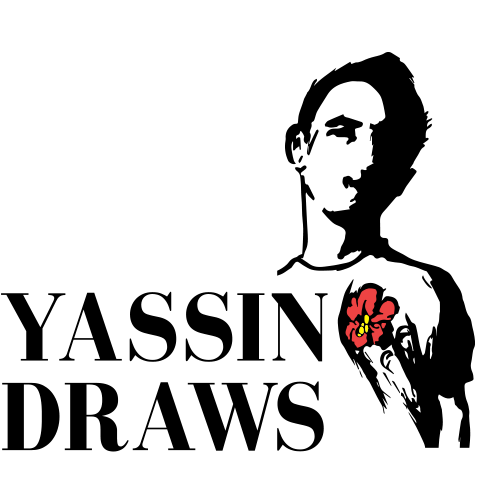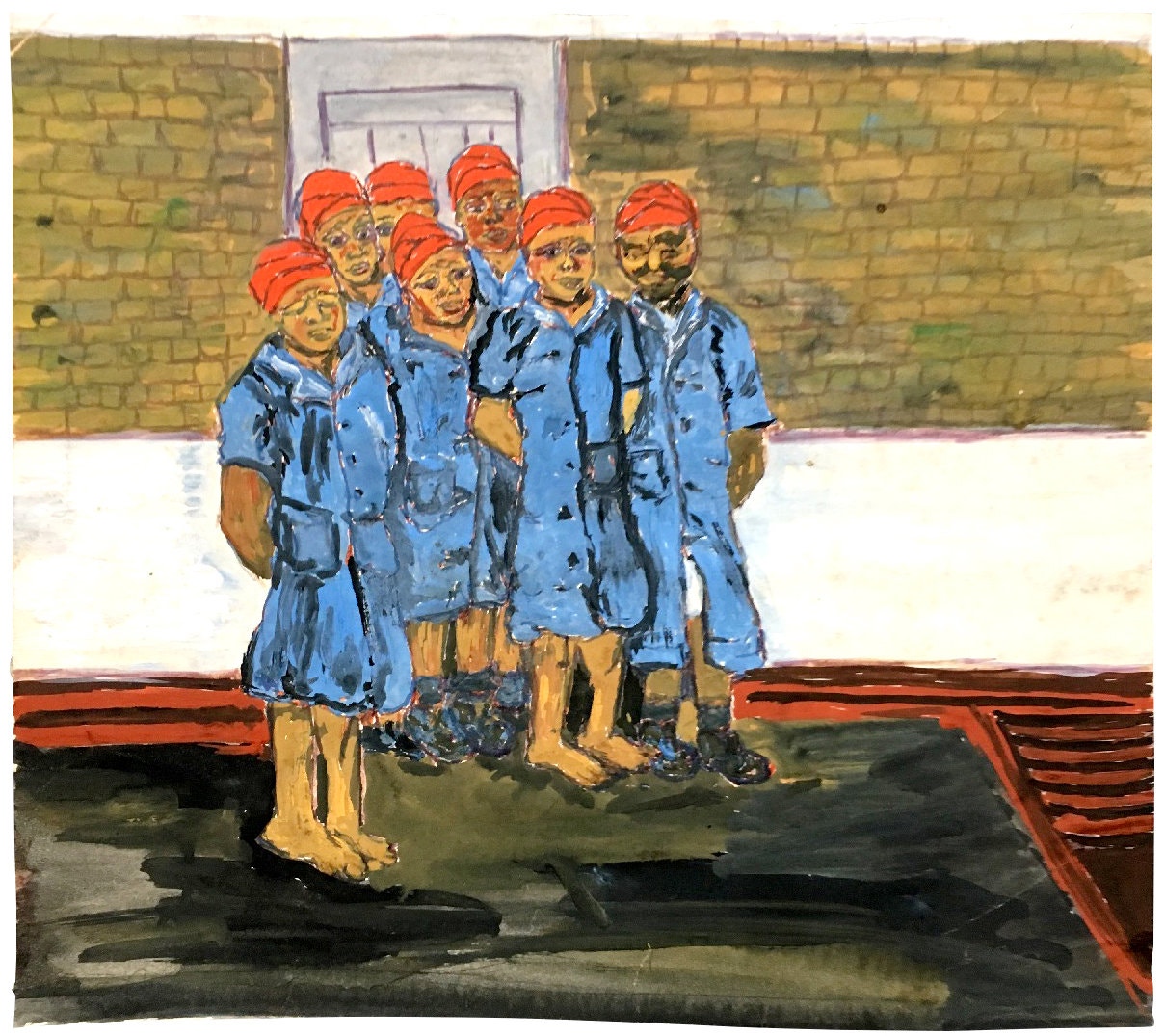In the opening of her new book, “Making Comics,” the cartoonist and MacArthur fellow Lynda Barry reminds her adult readers that they made art when they were young, even if they self-consciously stopped doing so long ago. “There was a time when drawing and writing were not separated for you,” she writes. “We draw before we are taught.”
I thought of Ms. Barry’s words about the innate primacy of making marks on paper while exploring “The Pencil Is a Key,” a remarkable exhibition at The Drawing Center. The show contains about 140 drawings made by more than 50 artists — some of whom had begun drawing long before being imprisoned and others who found their creative voices while behind bars.
The term “incarceration” is used somewhat loosely here. In the catalog, the curators — all four members of the organization’s curatorial staff, and the director — define incarceration as “any situation in which an individual is denied their freedom.” I’d tweak that to physical freedom, as the exhibition features artists who have been confined against their will, whether in French Revolution-era prisons, the Soviet gulag, mental institutions, or in the United States under the practice of mass incarceration.
That list only partly represents the range of times and places from which these works come; such breadth is what makes the show so unusual. While wall labels supply information on the artists’ identities and the circumstances of their imprisonment — including presumed innocence or guilt — “The Pencil Is a Key” is not ultimately about the politics of incarceration. By drawing connections across centuries and cultures, the show makes a soulful statement about the fundamental nature of creative expression and what it means to be imprisoned.
The show begins with familiar names, like Honoré Daumier and Gustave Courbet, both of whom were imprisoned during France’s tumultuous 19th century (Daumier for a caricature of the king; Courbet for his part in the Paris Commune). Their inclusion signals not only the historical scope of the exhibition but also its institutionally serious purpose to focus mostly on those who have been identified — whether by themselves or by society — as artists, rather than on prisoners who happen to have made art.
There are terrific exceptions in the second gallery: spotlights on paños chicanos, which are drawings on handkerchiefs, and envelope drawings. In these cases, rather than concentrating on specific creators, the curators have included dozens of examples as a means of illuminating resourceful and baroque genres of contemporary American prison art.
Thus a show that begins on the fairly traditional ground, with Mr. Daumier’s witty lithographs and Mr. Courbet’s plaintive sketch of a cell, swiftly veers into more expansive and unpredictable territory.
A series of drawings by Migron, an inmate at Mazas and then Saint-Joseph Prison in France, tells the story of a man who murders his wife’s lover in the style of a comic strip. Its simple forms and rich colors have an unlikely resonance with diaristic ledger drawings by Howling Wolf, Bear’s Heart, and Etadleuh Doanmoe, whose works offer glimpses of their Native American nations’ exploits and struggles against the United States government. The three were among the 72 Southern Plains leaders imprisoned at Fort Marion after the late-19th-century Red River War, but two of them were first sent to Fort Sill — which, as the wall text notes, became a Japanese-American internment site nearly seven decades later.
In a pair of charcoal drawings, Miné Okubo expresses the pain of internment by rendering stone-faced figures in thick strokes with their arms raised. The pose reminded me of photographs of the Holocaust — which is represented in a group of works nearby. Most haunting are two nightmarish sketches of skeletons playing the clarinet — studies for the painting “Death Triumphant” (1944) — made by Felix Nussbaum not long before he was killed at Auschwitz.
“The Pencil Is a Key” runs chronologically, but one of its strengths (helped by the fact that the Drawing Center’s main galleries comprise only two rooms) is that you can trace different paths and connections through it. A small, devastating collection of handmade greeting cards from gulag camps — one for Easter depicts a baby chick breaking free of its shell, with a chain around its neck — prefigures the envelope art of today: Both seem made to be sent to loved ones, and both repurpose generic imagery for personal expression.
Remarkably, the composition of Mahmoud Mohamed Abd El Aziz’s “A Plea to God,” which he drew in 2018 while imprisoned in Egypt for participating in anti-government demonstrations, is almost identical to that of the Chilean artist Miguel Lawner Steiman’s “Navidad en Ritoque (Christmas in Ritoque),” made while he was incarcerated at a Chilean concentration camp in 1974. The two present bird’s-eye views of men — presumably the artists themselves — hunched over drawings in their cells.
Such similarities raise questions: Can the aesthetics of prison art be identified or defined? Are people in confinement more likely to draw certain things? The curators avoid a typology, but themes and motifs emerge. Quite a few artists have passed time by making portraits of their fellow inmates, including Zhang Yue in China, José Alvarez (D.O.P.A.) in the United States, and Azza Abo Rebieh in Syria; others, like Inez Nathaniel-Walker, dreamed up the people they drew.
Depictions of the built environment are common, whether intimate, vibrant renderings of life thereby Fatima Meer, who was incarcerated during South Africa’s apartheid era, or a dense cityscape devoid of humans and drawn from memory by Abdualmalik Abud, who spent almost 15 years at Guantánamo Bay. (His tranquil sketch contrasts sharply with the Guantánamo detainee Abu Zubaydah’s recently released drawings of the torture he endured in secret prisons by the C.I.A., made as legal evidence and published in The New York Times.)
Some have tried to escape their confinement by pouring the contents of their imaginations onto the page: Frank Jones, a longtime inmate at Texas State Penitentiary in Huntsville, drew ghosts and devils inside red and blue structures that seem to crackle with fire, while Marcus Behmer, who was imprisoned by the Nazis for homosexuality, is represented here by three trippy, occult-like drawings of humans, animals and hybrid creatures.
As I walked through “The Pencil Is a Key,” I made notes about some of the ways that drawing functions for people in captivity: as documentation or expression of identity; as a means to connect with the world or to create other worlds; as a form of currency or communication. Especially because it eschews the complicated issue of legal innocence or guilt, the exhibition provokes serious, empathetic thought.
It will make you consider anew what art is, can be, and can do. To put pencil or pen to paper in such circumstances is to reassert your humanity — to remind yourself and others that you exist. It’s a way of saying “I’m still here,” when the powers that be don’t want you to be seen.

